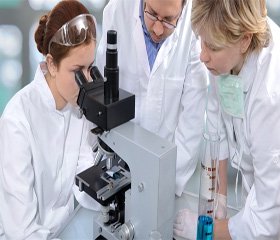Международный неврологический журнал 8 (62) 2013
Вернуться к номеру
Inhibitory effect of bacterial melanin on cerebral inflammatory response following traumatic brain lesion in rats
Авторы: Petrosyan T.R. - Department of Kinesiology. Armenian State Institute of Physical Education
Рубрики: Неврология
Разделы: Клинические исследования
Версия для печати
study, brain lesion, inflammation, bacterial melanin, protective action.
Traumatic brain injury (TBI) remains a significant public health problem in the world. One of the objectives of TBI treatment is to prevent secondary brain damage. Such damage may be caused by increased level of numerous immune mediators in response to brain injury. In the last decade the number of neuroprotective agents of various origin have been successfully used in the treatment of neurodegenerative diseases. In the present study solution of bacterial melanin (BM) was used for this purpose. The bacterial melanin concentration of (6mg/ml), used in the present study, has been successfully applied by us in physiological studies in previous years, to induce recovery of motor function in rats after the destruction of different CNS structures involved in the organization of motor behavior. The purpose of this study was to determine whether bacterial melanin is able to weaken the secondary inflammation in brain tissue after unilateral destruction of sensorimotor cortex in rats. We hypothesized that the effect of bacterial melanin on suppression of the inflammatory response is due to the peculiarity of BM to prevent brain swelling, improve microcirculation and inhibit apoptosis after cerebral injury. Other studies have showed the influence of melanocyte stimulating hormone on learning and memory, such as classical and instrumental conditioned reflexes in birds and mammals, visual discrimination, habituation and imprinting in fish and amphibians.
Materials and methods. The study was conducted in 12 non-linear, adult white male rats, with body weight of 180-250. All animals were anesthetized with Nembutal (35-40mg/kg i/p) and unilateral destruction of sensorimotor cortex was performed. In rats, craniotomy was performed (2mm rostral, 3mm caudal and 3mm lateral to the line "0" (coronary line Bregma) and grey matter of this area was removed through a thin glass pipette. After this operation contralateral limb paresis was observed in rats. BM was administered on the day following the surgery (170/mg/kg and 6mg/ml). 30 days after the operation all experimental animals were sedated with Nembutal (45-50 mg / kg body weight). In deep narcotic sleep decapitation was performed. Then the brains were fixed in 5% neutral formalin solution, prepared in phosphate buffer (pH 7.4) and 50-60μ sections were prepared for microscopic examination. Histochemical and histoangiological methods were used to study the brain sections. Student’s t-test was used to assess the level of significance of morphometric data differences.
Results. After unilateral destruction of sensorimotor cortex the process of motor recovery was observed in operated rats, treated and not treated with BM. In rats injected with BM after surgery locomotion fully recovered in 10-12 days, whereas in control rats paralyzed movements fully recovered in 30-35 days.
Brain sections were prepared one month after the operation and administration of BM solution. Location, extent and depth of the lesion of the sensorimotor cortex was compared in both group sections. In sections of control animals pronounced process of gliosis was revealed. The margins of the ablated area were clearly identified due to the formation of connective tissue scar - the powerful barrier that prevents migration of nerve and glial elements, inhibits growth of axons. In sections of experimental animals a convergence, and in some sections fusion of the margins of injured area was revealed. There were also significant differences in the degree of infiltration of the area with connective tissue. In treated rat sections the brain tissue surrounding the wound contained more glial cell nuclei and few number of macrophages. Increased vascularization and dilation of capillaries was revealed in treated animals. Morphometry was performed in the sensorimotor cortex. Calculations showed that brain capillaries in treated rats were dilated for 8,5% (P <0,01), as compared with the control rats, which resulted in significant enhancement of the brain trophism.
Conclusions. The therapeutic effect of bacterial melanin after brain tissue damage is due to increased blood flow in the microcirculatory bed, improved trophism of brain tissue, beneficial effect on the modulation of the secondary inflammatory process and the inhibition of gliosis.

